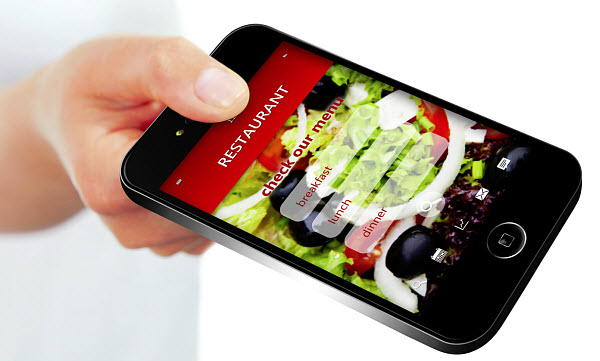The smartphone application for restaurant waitlisting is making it easier to complete the dining experience.
NoWait, a restaurant waitlisting service, has already established a popular smartphone app that allows diners to be able to “line up” digitally at nearby participating restaurants where they do not have reservations and the application is now rolling out their mobile payments service to boost the available convenience.
These services are meant to shrink the amount of time needed to get a meal without having to wait.
The mobile app has rapidly been increasing in its popularity over the last few years. It offers diners a range of different features, but it also provides a subscription-based suite of tools to restaurants. This allows the businesses themselves to be able to manage their waitlists, server rotation, seating, reservations, and many other important factors. By the time of the writing of this article, there were already nearly 4,000 restaurant companies that had signed on to use this platform. Among them, several are very large chains, such as Buffalo Wild Wings, Chili’s, On the Border, and First Watch, among others. Now, the app is also offering mobile payments.
The mobile payments are available in both the Android and iOS versions of the NoWait application.
 The mobile app currently seats more than 25 million diners every month. This is a staggering amount of growth over the same figure in 2014, which had been just over 5 million per month. At that time, it had only just finished its Series B financing round at which time it brought in another $10 million.
The mobile app currently seats more than 25 million diners every month. This is a staggering amount of growth over the same figure in 2014, which had been just over 5 million per month. At that time, it had only just finished its Series B financing round at which time it brought in another $10 million.
It has already seated over 250 million diners who have used the application in order to join the line to wait for a table. The application is appropriate for both smartphone and tablet users. It has been downloaded more than 3 million times and NoWait is predicting that by the end of this year, there will have been about 5 million individual diners who will have headed out to restaurants by way of this mobile application.
By adding mobile payments, the goal is to be able to complete the entire dining experience over the smart device.
Millennials are a very powerful demographic when it comes to mobile shopping
Millennials have become a very powerful demographic in the mobile commerce space, but connecting with these consumers have proven quite difficult for many companies. For years, companies have focused on older generations because they were relatively easier to connect with. The advent of mobile payments systems has caused a shift in priorities for retailers, however, and these companies are now beginning to seek out ways to better engage millennials, most of whom grew up steeped in mobile technology.
This demographic accounts for $600 million in spending and have a strong interest in mobile commerce
Millennials account for an estimated $600 million in spending, which makes this demographic quite attractive to retailers. Many of these consumers have shown that they are interested in mobile commerce and shopping online. These see this as more convenient than conventional forms of shopping and are more willing to use their smartphones to make purchases. This is because many millennials have never lived in a world separated from the Internet, and thus have become heavily reliant on mobile technology and being able to connect to the digital world on a whim.
Retailers will have to find new and dynamic ways to connect with mobile consumers
 As retailers become more invested in mobile commerce, they will have to find ways to engage millennials specifically. The problem, however, is that this demographic has shown itself to be somewhat fickle, unlikely to support a singular payment or retail platform for any significant length of time. Loyalty programs may ensure consumer dedication for a time, but businesses will have to find other ways to effectively engage consumers in order to secure their loyalty.
As retailers become more invested in mobile commerce, they will have to find ways to engage millennials specifically. The problem, however, is that this demographic has shown itself to be somewhat fickle, unlikely to support a singular payment or retail platform for any significant length of time. Loyalty programs may ensure consumer dedication for a time, but businesses will have to find other ways to effectively engage consumers in order to secure their loyalty.
Customer experience has become a very important thing for consumers
The mobile payments space is likely to continue to grow well into the future, surpassing the e-commerce market, in terms of growth, in the coming years. As the sector grows, new payment platforms are likely to feature better customer experiences, tapping into the demands coming from consumers. Better customer experiences are in high demand among millennials, which is forcing some companies to transition from the mobile web to applications, or vice versa, in order to making online shopping more convenient.
 The mobile app currently seats more than 25 million diners every month. This is a staggering amount of growth over the same figure in 2014, which had been just over 5 million per month. At that time, it had only just finished its Series B financing round at which time it brought in another $10 million.
The mobile app currently seats more than 25 million diners every month. This is a staggering amount of growth over the same figure in 2014, which had been just over 5 million per month. At that time, it had only just finished its Series B financing round at which time it brought in another $10 million.
 As retailers become more invested in mobile commerce, they will have to find ways to engage millennials specifically. The problem, however, is that this demographic has shown itself to be somewhat fickle, unlikely to support a singular payment or retail platform for any significant length of time. Loyalty programs may ensure consumer dedication for a time, but businesses will have to find other ways to effectively engage consumers in order to secure their loyalty.
As retailers become more invested in mobile commerce, they will have to find ways to engage millennials specifically. The problem, however, is that this demographic has shown itself to be somewhat fickle, unlikely to support a singular payment or retail platform for any significant length of time. Loyalty programs may ensure consumer dedication for a time, but businesses will have to find other ways to effectively engage consumers in order to secure their loyalty.